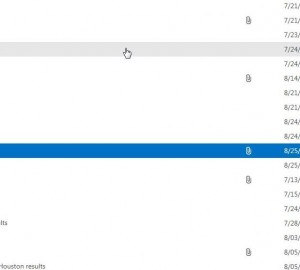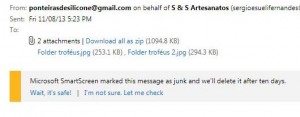Although we don’t get nearly as many as we used to, some very dangerous emails still make their way into our inbox. Which ones are those? Emails with attachments, that’s what we’re writing about today. We’ll give you a few tips on how to stay safe and protect yourself from these malicious emails.
1. What’s an ‘attachment’?
Most of the time, an email is just words that someone has typed, no different than a text message. Some emails looks much like a webpage, specifically those from companies that you’ve chosen to deal with or receive ads from. Nothing much to worry about there, right? Complications arise when someone attaches a file to an email. Let’s say you’re sending a resume to a company that’s hiring. You could copy and paste your CV into the body of the email or you could attach the whole file to the email. The format for this file may vary, from PDF to .doc to .docx, etc., but the full file is sent with the email. At the other end, the person who opens that email has to download the file and open it on their computer. (Some online email providers allow documents to be opened with their email program but not all do this.) Hopefully, you’ll see where this is going. What if that attachment isn’t a simple Word document?
2. How do I know if an email has an attachment with it?
If you use Outlook/Hotmail, it will look like this:

3. What are the dangers of email attachments?
Some types of files, zips for instance, contain executable files within them. An executable file is one that actually does something, as opposed to a photo that you simply look at. Some other types of files, pdfs for example, can have an executable file hidden inside them. You are not able to send unzipped executable files any more, most email providers, if not all, have chosen to eliminate ‘exe’ files as attachments. This doesn’t mean that you’re safe, just that you have to be more careful.
If you somehow get an .exe file and click on it, you could be allowing a virus to take control of your computer or installing a key-logging program which will remember everything you type then send that data to an identity theft gang; any number of bad things, in other words. That’s why attachments can be dangerous.
4. How do I know if an attachment is safe?
Here are some simple rules to follow when faced with an email that has an attachment:
A. Do you know the sender?
B. If you know the sender, is the attachment described in the email? “I’m attaching a copy of my latest resume. Could you check it over for me?”, something like that.
C. If you know the sender, does the subject line of the email look like something they would say? “Hey! Look at this hot pic I just took!” is an example of something you shouldn’t open, let alone download the attachment.
D. Are you expecting an email with an attachment from someone you know or a company you deal with. Is the company you contacted sending you the manual for something you bought? Is a government agency sending you a new tax form? Did you request something from this person or company?
You’ll have to answer these questions yourself but A. is a definite NO, right? C is very popular now, specially on social media sites but often in emails. Basically, you have to use your head. If you delete an email that has an attachment, don’t worry about it. The rule here is to protect your computer and your identity first. If the attachment was legitimate, that person or company can always send it again.
TIP : Outlook/hotmail has a cool feature that locks attachments and pictures in emails from persons or companies that are not on your contact list or who you haven’t certified as being safe. Here’s what this looks like:

Don’t know the sender? They’re not on your contact list? Outlook protects you from the hidden dangers in these emails. You have two choices besides deleting these. If you know the person or company, click ‘Wait, it’s safe!’. If you’re uncertain, click ‘I’m not sure. Let me check’. If you choose this one, Outlook shows you a bit more of the email but still keeps some things locked down. In the photo above, there are two attachments and we know for sure that these are malware/viruses or other nasty things. Besides, we’ve never heard of the sender. We’d have to go way out of our way to get infected by this email but, unfortunately, people do this every day. Now you know the dangers.
Thanks for reading! Let us know if you have questions or suggestions about this or anything else ‘techish’. Like us on Facebook so you can keep up with our posts and tech tips: Computers Made Simple on Facebook
